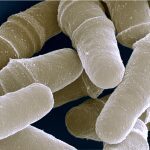Link to Pubmed [PMID] – 21901217
Photochem. Photobiol. Sci. 2012 Jan;11(1):74-80
Ultraviolet A (UVA) radiation represents more than 90% of the solar UV radiation reaching Earth’s surface. Exposure to solar UV radiation is a major risk in the occurrence of non-melanoma skin cancer. Whole genome sequencing data of melanoma tumors recently obtained makes it possible also to definitively associate malignant melanoma with sunlight exposure. Even though UVB has long been established as the major cause of skin cancer, the relative contribution of UVA is still unclear. In this review, we first report on the formation of DNA damage induced by UVA radiation, and on recent advances on the associated mechanism. We then discuss the controversial data on the UVA-induced mutational events obtained for various types of eukaryotic cells, including human skin cells. This may help unravel the role of UVA in the various steps of photocarcinogenesis. The connection to photocarcinogenesis is more extensively discussed by other authors in this issue.

